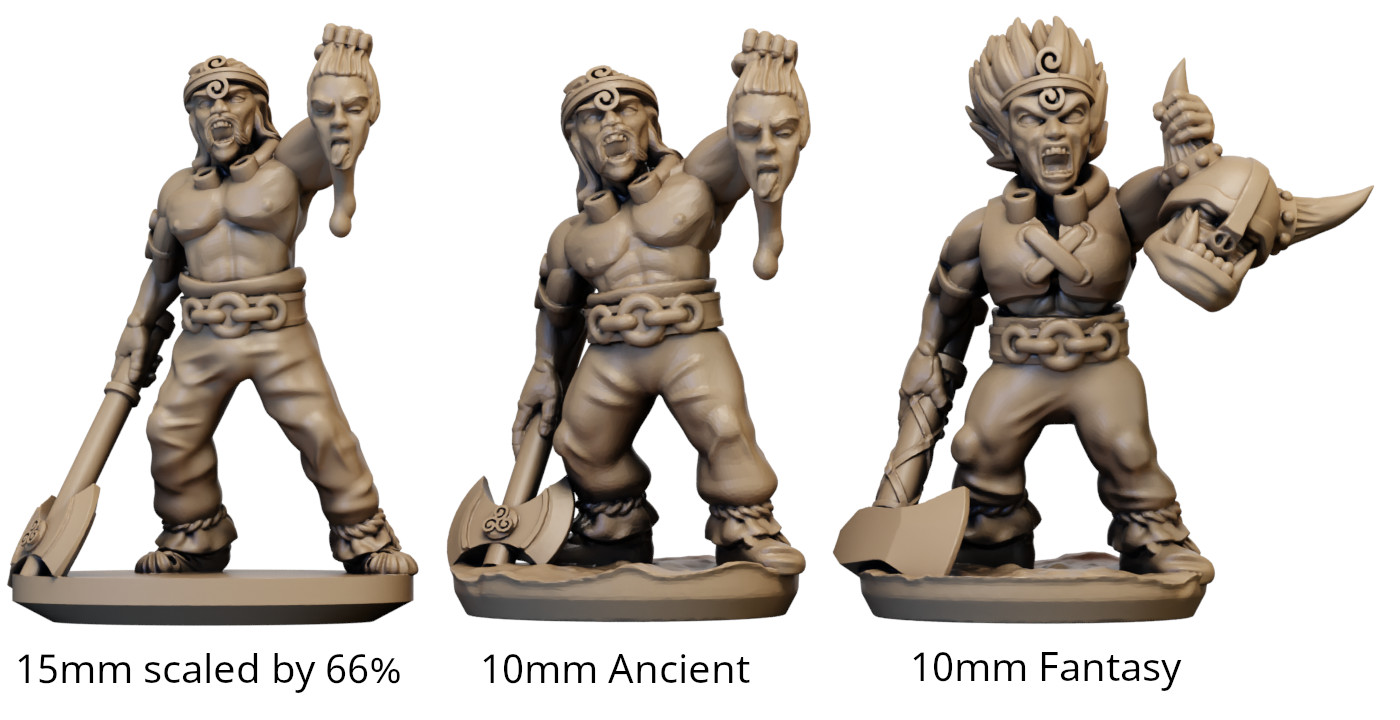
About scale
All of the models are based on 10mm or 15mm scale, measuring from the base of the sandal to the eyeball. Posing will inevitably reduce this distance, in all but the most upright of figures. If you are printing your models and wish your army to conform to scales used by other manufacturers, please print a few test models with varying scale to find a perfect match.
Proportions
Below is a picture of three models:
- On the left is a 15mm historical sculpt scaled by 66%
- In the middle is a 10mm historical sculpt
- On the right is a 10mm fantasy sculpt

This image allows a comparison of proportions. The proportional differences between the three scales are driven by a minimum thickness (x-section) requirement for small parts, particularly weapons. For instance, a spear shaft would typically be less than 50mm in diameter. This would translate to a spear shaft less than 0.2mm thick in 10mm, and 0.3mm in 15mm. Clearly this would be impractical for a model that you would like to withstand anything more than a light breeze. However, enlarging a weapon requires that the hand that holds it is enlarged too. Strangely the human eye seems OK with this as long as the head and feet are enlarged proportionally, and the arms legs and body are thickened. The level of hand re-scaling is greater for 10mm models than for 15mm models, so 15mm (and indeed 28mm and larger) models have tended to have a closer to true human proportion.
This leads to the next bit which is a little more nebulous. People have become used to certain levels of distortion in their models, leading to a "Feels right" aspect. Through conversation with several of you good people (Hat tip to Andy Meechan, Robert Ferguson, and Andrea Amenta) I have tried to find the "Right" proportions for my fantasy 10mm, ancients 10mm and ancients 15mm ranges. Interestingly there is nearly the same proportional change going from 10mm fantasy to 10mm ancients as there is going from 10mm ancients to 15mm ancients, this is why you get 7 or 8 models on an ancient strip and only 6 on a fantasy strip at 10mm.